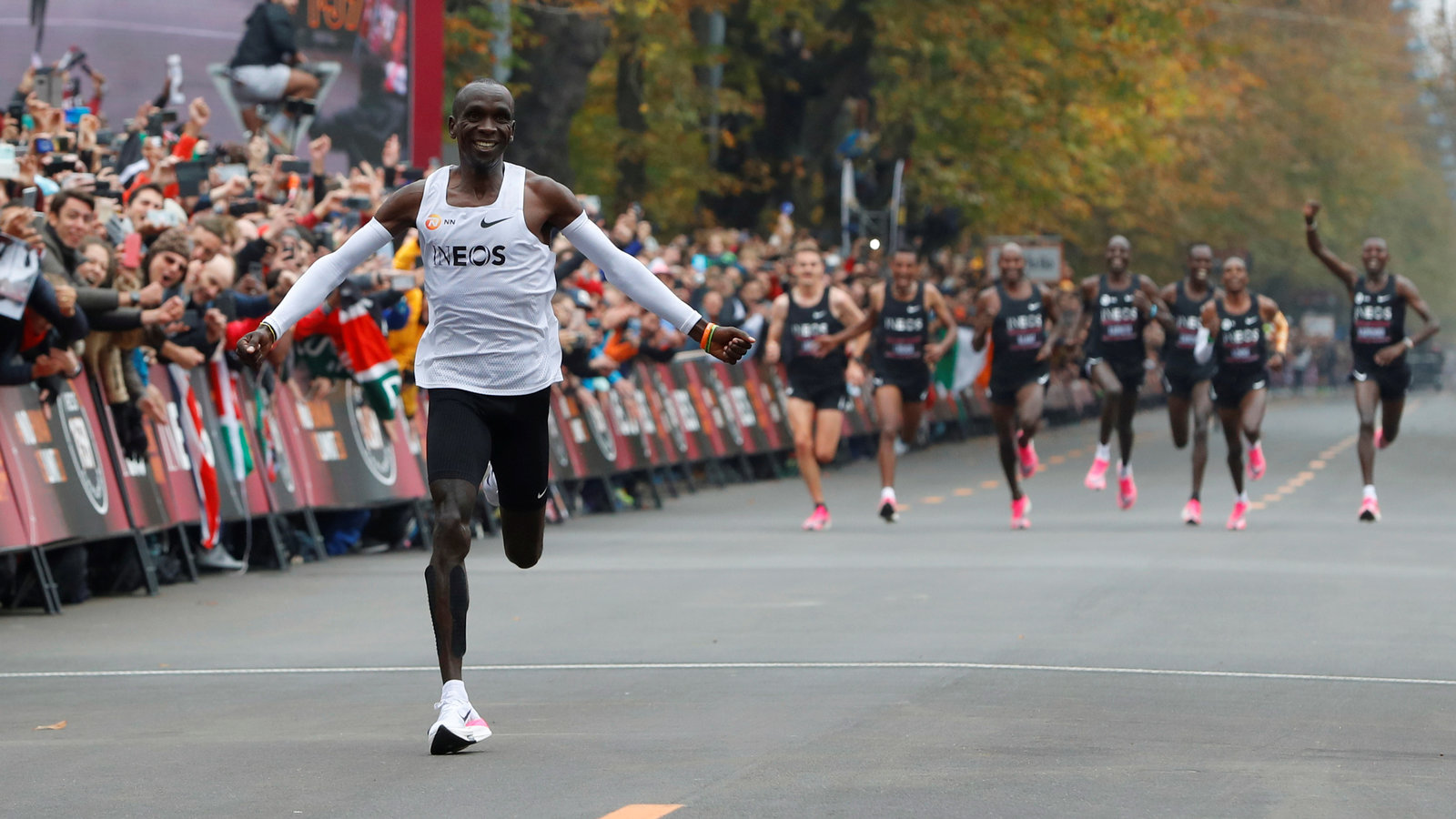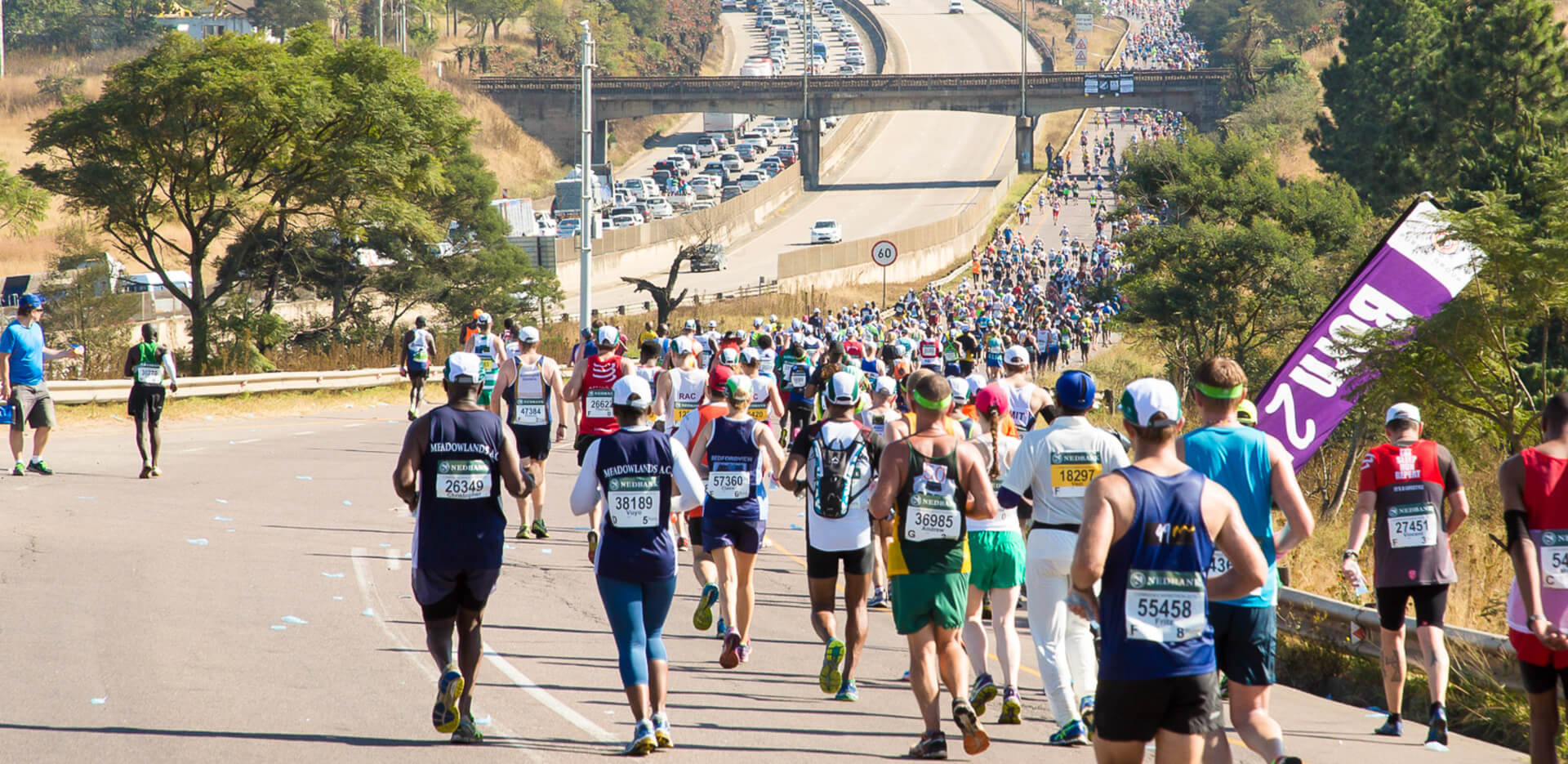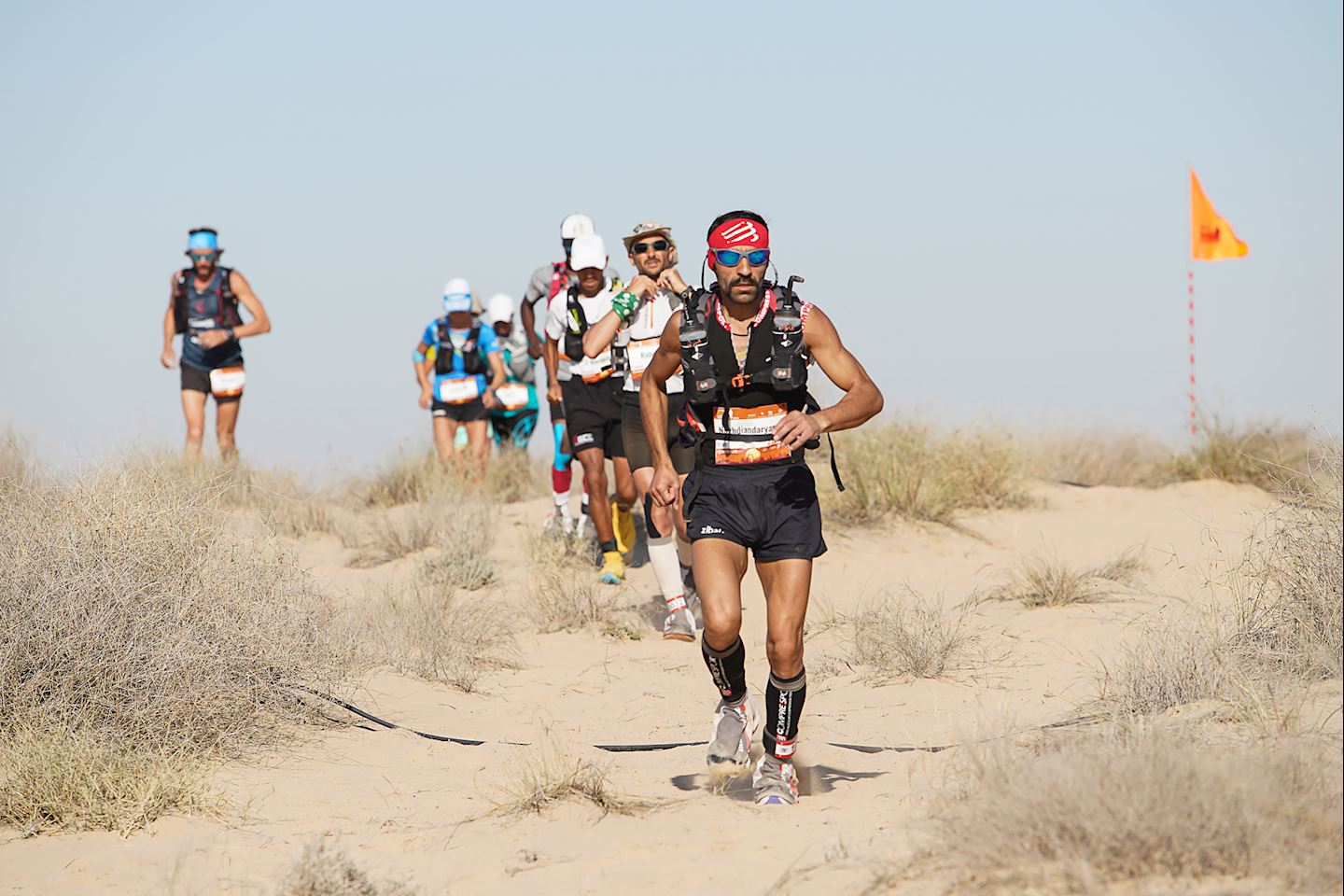

Featured
How Long Is A Ultra Marathon
Modified: January 22, 2024
Discover how long an ultra marathon actually is and what it takes to complete one. Get inspired by our featured runners and their incredible achievements.
Introduction
Welcome to the world of ultra marathons – the ultimate test of endurance and mental strength. In this fast-paced and competitive world, more and more runners are seeking the thrill and challenge of pushing their limits beyond the traditional marathon distance. Ultra marathons, typically defined as any race longer than a standard 26.2-mile marathon, have gained immense popularity in recent years.
Ultra marathons offer a unique and unparalleled experience for both seasoned runners and newcomers to the sport. These races not only test physical fitness but also require mental resilience and strategic planning. From punishing mountain trails to grueling desert terrains, ultra marathons take participants on a journey that goes far beyond the realms of conventional road running.
What sets ultra marathons apart from other races is the sheer distance. While the standard marathon distance of 26.2 miles is already a daunting challenge for many, ultra marathons push the boundaries even further, with distances ranging from 50 kilometers to multi-day races covering hundreds of miles. This extraordinary length demands a whole new level of preparation, training, and understanding of the unique demands these races present.
There are various types of ultra marathons, each with its own distinct characteristics and challenges. Some ultra marathons are held on well-marked trails, while others take place on treacherous mountainous terrain or even across desolate desert landscapes. The diversity of ultra marathons means there is something to suit every runner’s preferences and strengths.
Whether you are a dedicated marathon runner looking to take on a new challenge or someone completely new to running, this article will guide you through the world of ultra marathons. We will explore the different lengths of ultra marathons, the factors that affect their distances, as well as provide insights into training, nutrition, mental preparation, and recovery strategies specific to ultra marathon running.
So, if you are ready to embark on a journey that will push your physical and mental boundaries, join us as we delve into the exhilarating world of ultra marathons.
Understanding Ultra Marathons
Before diving into the intricacies of ultra marathons, it’s important to have a solid understanding of what exactly they entail. As mentioned earlier, ultra marathons are defined as races that go beyond the traditional marathon distance of 26.2 miles. However, the distances covered in ultra marathons can vary significantly.
Ultra marathons can range from 50 kilometers (31 miles) to multi-day races spanning hundreds of miles. The most common ultra marathon distances include 50 kilometers (31 miles), 50 miles (80 kilometers), 100 kilometers (62 miles), 100 miles (160 kilometers), and 200 miles (322 kilometers). These races attract runners from all walks of life, from recreational athletes seeking personal challenges to elite runners aiming for record-breaking performances.
One of the defining characteristics of ultra marathons is the terrain on which they are held. While some races take place on well-marked roads or trails, others traverse rugged mountain ranges, rocky terrains, or even unforgiving desert landscapes. The diverse environments encountered in ultra marathons add an extra layer of complexity to the already demanding physical and mental challenges these races present.
Ultra marathons are not just about covering long distances; they often involve significant elevation gain and loss. Runners may encounter steep climbs, treacherous descents, and technical sections that require agility and skill. This aspect of ultra marathons can make them even more physically demanding compared to traditional marathons.
Another aspect that sets ultra marathons apart is the time limit imposed on participants. Unlike traditional marathons where finishing within a certain time frame is the goal, ultra marathons often allow participants to progress at their own pace, within a set timeframe. Some races, especially longer ones, may have cutoff times at various checkpoints along the course to ensure participants’ safety.
Understanding the unique characteristics of ultra marathons is crucial in preparing for and participating in these races. It is essential to analyze the distance, terrain, elevation, and time limits of the specific race you plan to undertake. This knowledge will help you develop a training plan that addresses the specific challenges of the race and allows you to properly prepare physically and mentally.
Now that we have a clearer understanding of what ultra marathons are and the various factors involved, let’s take a closer look at the different lengths of ultra marathons and how they can vary from one race to another.
Different Lengths of Ultra Marathons
Ultra marathons come in a wide range of distances, each offering its own unique challenges and rewards. From relatively shorter distances like 50 kilometers to mind-bogglingly long distances like 200 miles, there is something for every adventurous runner.
One of the most common ultra marathon distances is the 50-kilometer race (31 miles). This distance is often seen as an entry point into the world of ultra marathons, as it provides a challenging yet manageable increase in distance for runners who have already conquered the marathon. The 50-kilometer ultra marathon usually takes place on well-marked trails or roads and is a popular choice for those looking to explore the ultra marathon distance.
Moving up in distance, we have the 50-mile ultra marathon (80 kilometers). This distance adds an extra challenge, testing the endurance and mental grit of runners. The 50-mile races often involve more elevation gain and technical terrain compared to the 50-kilometer races.
For those seeking an even greater challenge, there are the 100-kilometer (62 miles) and 100-mile (160 kilometers) ultra marathons. These races push runners to their limits, requiring not only physical strength but also mental fortitude and strategic planning. The 100-mile ultra marathon has gained a legendary status in the running community, attracting elite athletes and ultra running enthusiasts from around the world.
Looking beyond the 100-mile mark, we find races that cover distances of 200 miles (322 kilometers) or more. These multi-day ultra marathons take participants on an incredible journey through some of the most beautiful and grueling terrains in the world. These races often demand meticulous planning, crew support, and a high level of physical and mental preparation.
It’s important to note that the distances mentioned here are just a starting point. Ultra marathons can surpass these distances, with races like the famous Barkley Marathons covering around 100 miles (160 kilometers) with added navigation and elevation challenges. The point-to-point races like the Marathon des Sables cover over 250 kilometers in the scorching heat of the Sahara Desert, truly testing a runner’s physical and mental resilience.
Whether you’re a beginner or an experienced ultra marathoner, there is an ultra marathon distance suited to your level and aspirations. It’s essential to choose a distance that challenges you without overwhelming you, allowing you to enjoy the journey and feel a sense of accomplishment upon crossing the finish line.
Now that we’ve explored the different lengths of ultra marathons, let’s delve deeper into the factors that can affect the distances of these races.
Factors Affecting Ultra Marathon Distances
The distances covered in ultra marathons can vary greatly, and this is influenced by several factors. Understanding these factors can provide insights into why certain races have specific distances and help you choose a race that aligns with your goals and capabilities.
1. Race Organizers: Race organizers play a crucial role in determining the distance of an ultra marathon. They consider factors like location, terrain, available resources, and the overall experience they want to provide to the participants. Some organizers aim to create a unique and challenging race by extending the distance beyond the traditional ultra marathon distances.
2. Terrain and Elevation: The terrain on which an ultra marathon takes place significantly influences the distance. Races held on mountainous or hilly terrain tend to have shorter distances due to the added challenge of elevation gain and loss. On the other hand, races on flatter terrains may cover longer distances to maintain a similar level of difficulty.
3. Accessibility: The accessibility of the course and availability of support facilities like aid stations, medical support, and crew access points also impact the distance of an ultra marathon. Courses with limited access may require shorter distances to ensure participants’ safety and timely assistance if needed.
4. Time Constraints: The time limit imposed on a race can affect the distance covered. Longer races typically have looser time constraints, allowing participants to progress at their own pace. Conversely, races with stricter time limits may have shorter distances to ensure participants can reasonably complete the course within the allotted time.
5. Scenic Routes and Landmarks: Some ultra marathons are designed to showcase scenic landscapes or iconic landmarks along the course. In such races, the distance might be adjusted to include specific points of interest, enhancing the overall experience for participants.
6. Historical Significance: Certain ultra marathons have established their distances based on historical significance or traditional routes. These races often follow established routes or commemorate specific events, and the distances are preserved to honor their historical context.
7. Event Format: The format of an ultra marathon can also influence the distance covered. Single-stage races, where participants complete the entire distance in one go, usually have shorter distances compared to multi-day stage races where participants cover the distance over several days.
It’s important to consider these factors when choosing an ultra marathon that suits your preferences and abilities. By understanding the factors that affect the distance of a race, you can better prepare yourself physically and mentally for the specific challenges and experiences that lie ahead.
With a clear understanding of the factors influencing ultra marathon distances, we can now explore the essential aspects of training for an ultra marathon.
Training for an Ultra Marathon
Training for an ultra marathon requires a strategic and progressive approach to prepare your body and mind for the rigors of running long distances. Whether you are an experienced marathoner or new to long-distance running, a well-planned training program is essential to build endurance, improve strength, and minimize the risk of injury.
1. Gradual Build-up: Ultra marathon training is characterized by gradually increasing your weekly mileage and long run distance over several months. It’s important to start with a solid base of running fitness and gradually increase the duration and intensity of your training runs to avoid overuse injuries.
2. Long Runs: Long runs are the cornerstone of ultra marathon training. These runs simulate race conditions and help you develop the physical and mental endurance required to cover long distances. Aim to gradually increase your long run distance every week, with some runs exceeding the race distance to build confidence.
3. Back-to-Back Runs: To prepare for the cumulative fatigue experienced during an ultra marathon, incorporate back-to-back long runs into your training plan. This involves running long distances on consecutive days, simulating the endurance demand of running multiple days during a race.
4. Hill and Trail Training: Ultra marathons often involve challenging terrains with significant elevation gain and loss. To prepare for these demands, include hill repeats and trail running in your training. This will help develop the necessary strength and adaptability to handle varying terrains and gradients.
5. Strength and Cross-Training: Building strength through resistance training and cross-training activities like cycling or swimming can improve overall muscle endurance and reduce the risk of injuries. Incorporate exercises that target the muscles used in running, such as squats, lunges, and core exercises.
6. Recovery and Rest: Ultra marathon training puts a significant amount of stress on your body. Adequate rest and recovery are essential to avoid overtraining and reduce the risk of injury. Schedule rest days into your training plan and prioritize sleep and nutrition to optimize recovery.
7. Mental Preparation: Ultra marathons require mental strength and resilience. Practice visualization techniques, positive self-talk, and develop mental strategies to overcome challenges during the race. Build mental toughness during training runs by pushing through discomfort and maintaining a positive mindset.
8. Race-Specific Training: Tailor your training to the specific demands of the race you are targeting. If it is a hilly or mountainous race, include more elevation training. If the race requires running at high altitude, incorporate high-altitude training or simulated altitude training if possible.
Remember to listen to your body and adjust your training plan as needed. Pay attention to any warning signs of injury or burnout and seek professional guidance if necessary. Consistency, patience, and a gradual progression in your training will set you up for success in your ultra marathon journey.
Now that you have a comprehensive understanding of training for an ultra marathon, let’s explore the crucial aspects of nutrition and hydration during these endurance races.
Ultra Marathon Nutrition and Hydration
Nutrition and hydration are vital components of ultra marathon training and race day success. Due to the prolonged effort and high calorie expenditure, proper fueling and hydration strategies are crucial to maintain energy levels, prevent dehydration, and support overall performance. Here are some key considerations for ultra marathon nutrition and hydration:
1. Fueling Strategy: Develop a fueling plan that includes a balance of carbohydrates, protein, and healthy fats to sustain energy levels during the race. Consume a mix of easily digestible carbohydrates before and during the race to provide a steady supply of energy. Experiment with different types of fuel, such as energy gels, chews, or real food, during training to find what works best for you.
2. Hydration: Proper hydration is essential to avoid dehydration and electrolyte imbalances during an ultra marathon. Regularly drink fluids throughout the race, aiming for consistent but not excessive fluid intake. Include electrolyte-rich beverages or supplements to replace essential minerals lost through sweating.
3. Practice Hydration and Fueling: During training runs, practice your hydration and fueling strategy to determine what works best for your body. Experiment with fluid intake, types of fluids, and timing of fueling to find the optimal approach for your individual needs.
4. Aid Stations: Familiarize yourself with the locations and offerings at aid stations along the race course. Plan how you will utilize these stations to refill fluids, grab snacks, and replenish your energy supplies. Take advantage of the aid stations to stay fueled and hydrated during the race.
5. Eat Real Food: While energy gels and sports drinks can provide quick fuel, incorporating real food into your nutrition plan can offer more sustained energy and enjoyment during longer ultra marathons. Options like bananas, energy bars, nuts, sandwiches, and boiled potatoes can provide a mix of carbohydrates, protein, and fats.
6. Adapt to Conditions: Adjust your hydration and fueling strategies based on weather conditions. Hot and humid conditions will require increased fluid intake and electrolyte replacement, while cold conditions may require additional calorie intake to keep your body warm and maintain energy levels.
7. Listen to Your Body: Pay attention to your body’s signals during the race. If you feel thirsty or fatigued, it may be a sign that you need to drink more fluids or increase your calorie intake. Experimenting during training runs will help you understand your body’s unique cues and needs.
Remember, nutrition and hydration strategies are individualized, and what works for one person may not work for another. It’s essential to experiment during training to find the optimal approach that suits your body’s needs and preferences. Proper nutrition and hydration will fuel your body for peak performance and minimize the risk of negative effects during an ultra marathon.
Now that we have covered the importance of nutrition and hydration, let’s explore the crucial aspect of mental preparation for ultra marathons.
Mental Preparation for an Ultra Marathon
While physical training is crucial for an ultra marathon, mental preparation is equally important. Ultra marathons are not just a test of physical endurance but also mental resilience and fortitude. Here are some key strategies to help you develop a strong mindset for your upcoming ultra marathon:
1. Set Clear Goals: Define your goals for the race, whether it’s completing the distance, achieving a personal best, or simply enjoying the experience. Having clear goals will provide motivation and direction throughout your training and during the race itself.
2. Visualize Success: Spend time visualizing yourself crossing the finish line, overcoming obstacles, and feeling strong throughout the race. Mental imagery can boost confidence, reduce anxiety, and help you stay focused and positive during challenging moments.
3. Positive Self-Talk: Practice positive self-talk to combat negative thoughts and doubts. Replace self-critical or negative statements with affirmations and encouraging words. Remind yourself of your strengths, training accomplishments, and resilience to overcome challenges.
4. Break it Down: The distance of an ultra marathon can seem overwhelming, so break it down into smaller manageable sections or checkpoints. Focusing on one segment at a time can make the race feel more attainable and allow you to stay focused on the present moment.
5. Develop Mental Strategies: Create mental strategies to help you stay motivated and push through difficult moments. This could include techniques such as repeating a mantra, counting steps, focusing on your breath, or dedicating sections of the race to loved ones or a meaningful cause.
6. Embrace the Unknown: Ultra marathons come with unexpected challenges and the element of uncertainty. Embrace the unpredictability and learn to adapt to the changing conditions. Cultivate a mindset of flexibility and resilience to navigate any obstacles that come your way.
7. Practice Resilience: Ultra marathons will test your mental and physical limits. Train your ability to bounce back from setbacks, such as fatigue or a difficult segment of the race. Embrace the discomfort and view it as an opportunity for growth and self-discovery.
8. Support Network: Surround yourself with a supportive network of family, friends, or training partners who understand the challenges of ultra marathons. Share your goals, fears, and triumphs with them. Their encouragement and presence can provide much-needed motivation during tough moments.
Remember, mental preparation is an ongoing process that should be incorporated into your training. Develop a routine that includes visualization, positive self-talk, and mental strategies during your long runs and challenging training sessions.
By building mental resilience and adopting a positive mindset, you will be better equipped to overcome the mental hurdles that arise during an ultra marathon and find joy and fulfillment in the unforgettable journey ahead.
As we near the end of our exploration, there is one more crucial aspect to cover – recovery and injury prevention in ultra marathons.
Recovery and Injury Prevention in Ultra Marathons
Recovering properly and preventing injuries are key factors in ensuring your long-term success and enjoyment in ultra marathons. The intense physical demands of these races require a thoughtful approach to recovery. Here are some essential strategies for effective recovery and injury prevention:
1. Rest and Active Recovery: Give your body ample time to rest and recover after an ultra marathon. Take at least a few days of complete rest, allowing your muscles and joints to heal. Engage in active recovery activities such as gentle stretching, foam rolling, or low-impact exercises to promote blood flow and aid in muscle repair.
2. Nutrition and Hydration: Proper nutrition and hydration continue to be important even after the race. Replenish your body with nutrient-rich foods, adequate protein, and antioxidants to support muscle repair and reduce inflammation. Stay hydrated to aid in the elimination of waste products and enhance recovery.
3. Gradual Return to Training: Give your body time to recover fully before resuming training. Start with light and low-impact activities, gradually increasing the intensity and duration over several weeks. Listen to your body and adjust your training accordingly to avoid overtraining and potential injuries.
4. Cross-Training: Engage in cross-training activities like swimming, cycling, or yoga to maintain fitness while reducing the impact on your joints. Cross-training helps to build strength, flexibility, and overall fitness without placing excessive stress on your muscles and ligaments.
5. Strength and Mobility Training: Incorporate strength training exercises into your routine to improve muscular balance and stability. Focus on strengthening the muscles that support your running mechanics, such as the core, hips, and glutes. Additionally, include mobility exercises to enhance flexibility and reduce the risk of overuse injuries.
6. Listen to Your Body: Pay attention to any signs of pain, discomfort, or injury during training and address them promptly. Ignoring warning signs can lead to further damage and setbacks. Rest, modify your training, or seek professional assistance if needed.
7. Sleep and Stress Management: Adequate sleep supports recovery and overall well-being. Aim for 7-9 hours of quality sleep each night. Manage stress through relaxation techniques, such as meditation or deep breathing exercises, to optimize recovery and mental well-being.
8. Injury Prevention: Take proactive measures to prevent injuries. This includes gradually increasing training volume, incorporating rest days, wearing proper footwear, and listening to your body’s signals. Regularly review and adjust your training plan to minimize the risk of overuse injuries.
Remember, recovery is not just about the physical aspect but also involves mental and emotional rejuvenation. Prioritize self-care and allow yourself to recover both physically and mentally, achieving a balance between training and rest.
By implementing effective recovery strategies and taking proactive measures to prevent injuries, you will be able to continue your ultra marathon journey with reduced risk of setbacks and a greater ability to perform at your best.
As we near the end of our comprehensive guide to ultra marathons, it is clear that these races pose both physical and mental challenges. With the right preparation, training, nutrition, and recovery strategies, you can conquer the ultra marathon distance and unlock the true potential of your endurance abilities.
Conclusion
Ultra marathons are a remarkable endeavor that pushes the boundaries of physical and mental endurance. From understanding the different lengths of ultra marathons to training strategies, nutrition and hydration, mental preparation, and recovery, each aspect plays a vital role in your journey towards success.
By immersing yourself in the ultra marathon world, you not only challenge your limits but also gain a deeper understanding of your own capabilities. It is a test of resilience, determination, and the ability to embrace the unknown.
Remember that ultra marathons are highly individualized, and what works for one person may not work for another. Tailor your training and nutrition plans to your specific needs and goals. Seek guidance from experienced runners, coaches, and healthcare professionals to ensure you are on the right track.
Through meticulous preparation, disciplined training, and mental fortitude, you will experience the immense satisfaction of crossing the finish line of an ultra marathon. It will be a testament to your dedication, perseverance, and the ability to accomplish what once seemed impossible.
As you embark on your ultra marathon journey, let the trails guide you, the mountains inspire you, and the obstacles shape you into a stronger version of yourself. Embrace the challenges, savor the triumphs, and relish the moments of pure joy that come with pushing beyond your limits.
Now, take your first step on the path to conquering an ultra marathon. Lace up your shoes, fuel your body, strengthen your mind, and embrace the extraordinary journey that awaits you.









